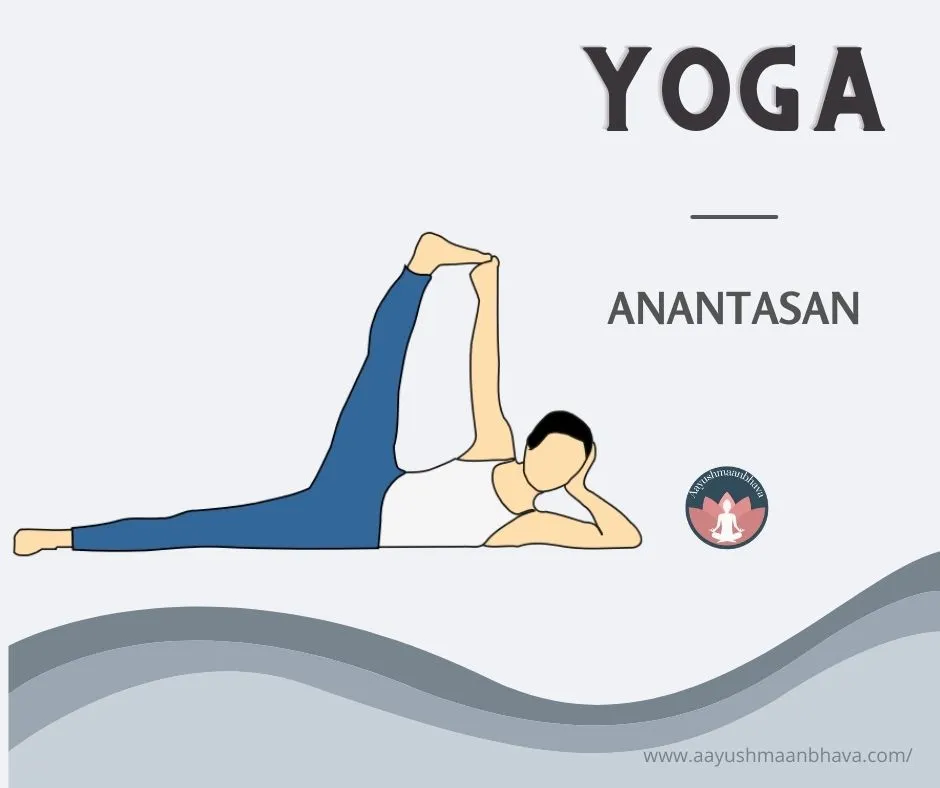Anantaasan, also known as the Serpent’s Pose or Anantasana, is an elegant yoga asana that offers physical and mental benefits. This pose, steeped in ancient Indian mythology, is an excellent addition to any yoga practice. In this article, we will delve into the origin and significance of Anantaasan, provide a step-by-step guide to perfecting the pose, discuss modifications, variations, and contraindications, and explore its benefits in detail. So, let’s unravel the secrets of this mystical asana together.
Understanding Anantaasan
Anantaasan derives its name from the Sanskrit words ‘Ananta,’ which means infinite or endless, and ‘asana,’ which means pose or seat. In Hindu mythology, Ananta is the cosmic serpent associated with Lord Vishnu, the preserver of the universe. This asana is a tribute to the serpent’s significance in yoga and its representation of infinite knowledge, wisdom, and energy.
Step-by-Step Guide to Anantaasan
Before you attempt Anantaasan, it is important to warm up your body with some preparatory poses like Uttanasana (Standing Forward Bend), Adho Mukha Svanasana (Downward-Facing Dog), and Supta Padangusthasana (Reclining Hand-to-Big-Toe Pose). These poses will help loosen up your hamstrings, hips, and shoulders. Once you’re warmed up, follow these steps to practice Anantaasan:
Lying on the side:
Begin by lying down on your right side, with your legs extended and your right arm supporting your head. Make sure your body is straight, from your head to your heels.
Leg and arm placement:
- Bend your right elbow and place your right hand on your hip.
- Slowly lift your left leg and place your left foot on your inner right thigh, just above your right knee. Your left knee should point towards the ceiling.
- Flex your right foot to stabilize the pose, and extend your left arm overhead, parallel to the floor.
Breathing techniques:
Inhale deeply and, as you exhale, bend your left knee and clasp your left big toe with your left hand. Keep your gaze focused on a fixed point in front of you to maintain balance. Breathe deeply and smoothly as you hold the pose.
Holding the pose and transitioning:
Hold Anantaasan for 5 to 10 breaths, focusing on maintaining stability and elongating the spine. To release, gently let go of your left foot, lower your left leg, and rest momentarily. Repeat the pose on the other side by switching your body’s orientation.
Common mistakes and troubleshooting tips:
Ensure your hips are stacked and not rolling backward or forward, as this will compromise your balance and alignment.
If your hand can’t reach your foot, use a yoga strap around your foot to make the connection.
Avoid collapsing your shoulder; engage your shoulder blades to maintain support.
Modifications and Variations
Anantaasan can be modified and adapted to suit different levels of experience and flexibility.
Beginner-friendly modifications:

Place a folded blanket or bolster under your head to provide additional support.
Keep your bottom leg bent at the knee for extra stability.
Intermediate and advanced variations:
Extend your top leg towards the ceiling while keeping your toes pointed.
Practice the pose with your back against a wall for support and alignment.
Using props to enhance and support the pose:
Use a yoga strap or belt to loop around your top foot if you can’t reach it with your hand.
Place a block under your head if your neck feels strained or needs more support.
Benefits of Practicing Anantaasan
Anantaasan offers many physical and mental benefits that can significantly enhance your overall well-being.
Physical benefits:
Core strength: Anantaasan engages the obliques, lower back, and deep abdominal muscles, helping to build core strength and stability. This can improve your posture and overall balance.
Flexibility and balance: The pose stretches the hamstrings, hips, and inner thighs while requiring strong balance. Regular practice can lead to increased flexibility and body awareness.
Improved digestion: Anantaasan helps massage the abdominal organs, stimulating digestion and helping to alleviate issues such as bloating and constipation.
Mental benefits:
Stress relief and relaxation: The gentle nature of this pose allows for deep breathing and relaxation, helping to reduce stress and anxiety levels.
Enhanced focus and concentration: Holding Anantaasan requires mental focus, which can improve your ability to concentrate and remain present in your daily life.
Connection to mythology and spirituality: Practicing Anantaasan can deepen your connection to ancient Indian mythology and foster greater spiritual awareness.
Contraindications and Precautions
While Anantaasan is generally safe and beneficial for most individuals, there are certain situations where the pose should be avoided or adapted.
General guidelines for safety:
Warm up properly before attempting the pose to avoid injury.
Listen to your body and never force yourself into any position that causes pain or discomfort.
When to avoid Anantaasan:
- During pregnancy, it may put pressure on the abdominal area.
- If you have any serious hip, knee, or shoulder injuries.
- If you suffer from severe vertigo or balance issues.
- How to adapt the pose for specific conditions or limitations:
Use props such as blocks, bolsters, or straps to accommodate for limited flexibility or support any injuries.
Consult a qualified yoga instructor or healthcare professional for guidance on adapting the pose to your specific needs.
Incorporating Anantaasan into Your Yoga Practice
To experience the full benefits of Anantaasan, consider integrating it into your regular yoga practice.
Combining Anantaasan with other poses: Anantaasan can be incorporated into a sequence that includes other balancing poses, forward bends, and hip openers. This can create a well-rounded and dynamic practice.
Designing a balanced sequence: Ensure your yoga sequence includes a mix of standing, sat, and supine poses to target different muscle groups and maintain balance in your body.
Developing consistency and progress over time: Consistent practice of Anantaasan can improve strength, flexibility, and mental focus. Set realistic goals and track your progress over time.
Conclusion
Anantaasan, the Serpent’s Pose, is a beautiful asana that carries the essence of ancient Indian mythology while offering numerous physical and mental benefits. Incorporating this pose into your regular yoga practice can enhance your core strength, flexibility, digestion, focus, and spiritual connection. Embrace the wisdom of the cosmic serpent and allow the infinite energy of Anantaasan to guide you on your journey to a healthier, more balanced life.
Watch video

